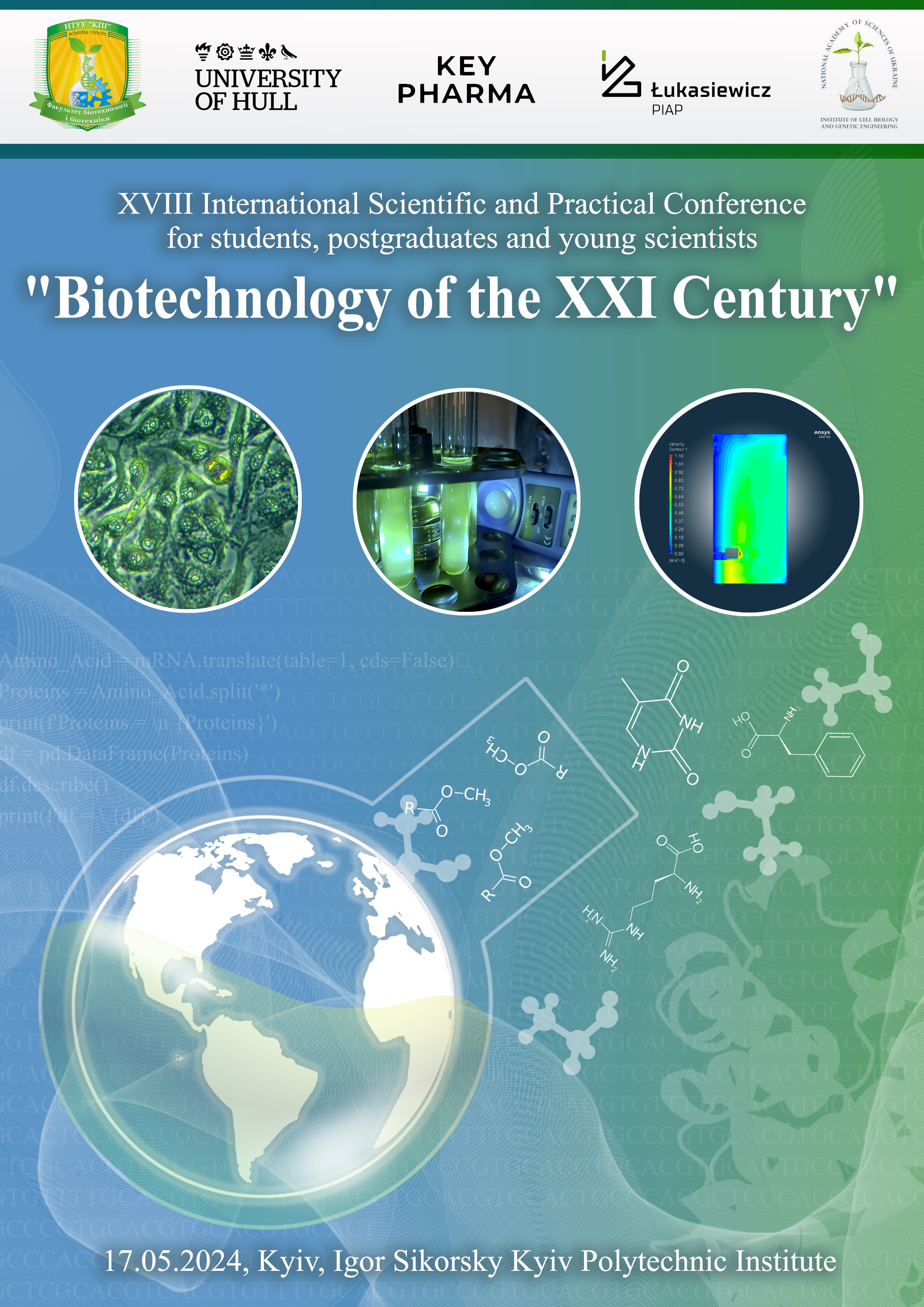АНАЛІЗ ЕФЕКТИВНОСТІ ВИКОРИСТАННЯ ВІДОМИХ МЕТОДІВ ОЧИЩЕННЯ СТІЧНИХ ВОД ВІД АНТИБІОТИКІВ
Ключові слова:
wastewater treatment, antibiotics, biological purificationАнотація
The chemical and physical-chemical methods оf wastewater treatment are limited due to high energy consumption and low efficiency. Aerobic biological treatment is also not always effective due to the high persistence of pharmaceutical substances. However, the use of certain plants (Lemna aoukikusa, Lemna minor, Spirodela polyrhiza, Lemna aequinoctialis, Chrysopogon zizanioides) demonstrates the 70 percent or more removal of various types of antibiotics.
Посилання
N. Jendrzejewska; E. Karwowska. The influence of antibiotics on wastewater treatment processes and the development of antibiotic-resistant bacteria. Water Sci Technol. 2018. Vol. 77 (9). P. 2320–2326. Available at: https://doi.org/10.2166/wst.2018.153.
Collado S., Quero D., Laca A., Diaz M. Efficiency and sensitivity of the wet oxidation/biological steps in coupled pharmaceutical wastewater treatment. Chemical Engineering Journal. 2013. Vol. 234. P. 484-490.
Jinlong Wang, Rui Wang, Jingqian Ma and Yongjun Sun. Study on the Application of Shell-Activated Carbon for the Adsorption of Dyes and Antibiotics. Water. 2022. Available at: https://doi.org/10.3390/w14223752.
Urase T., Kagawa C., Kikuta T. Factors affecting removal of pharmaceutical substances and estrogens in membrane separation bioreactors. Desalination. 2005. Vol. 178. P. 107-113.
Bellona C., Oelker G., Luna J., Filteau G., Amy G., Drewes J.E. Comparing nanofiltration and reverse osmosis for drinking water augmentation. Journal American Water Works Association. 2008. Vol. 100. P.102-116.
Oller I., Malato S., Sánchez-Pérez J.A. Combination of Advanced Oxidation Processes and biological treatments for wastewater decontamination. Science of the total environment. 2011. Vol. 409. P. 4141-4166.
Belkheiri D., Fourcade F., Geneste F., Floner D., Aït-Amar H., Amrane A. Feasibility of an electrochemical pre-treatment prior to a biological treatment for tetracycline removal. Separation and purification technology. 2011. Vol. 83. P. 151-156.
Hiroaki Habaki, Nivetha Thyagarajan, Zhuoheng Li, Shuyang Wang, Jack Zhang & Ryuichi Egashira. Removal of antibiotics from pharmaceutical wastewater using Lemna Aoukikusa (duckweed). Separation Science and Technology. 2023. Vol. 58. P. 1491–1501. URL: https://doi.org/10.1080/01496395.2023.2195544.
Balarak. Adsorption of amoxicillin antibiotic from pharmaceutical wastewater by activated carbon prepared from Azolla filiculoides. Journal of Pharmaceutical Research International. 2017. Vol. 18. P. 1–13. URL: 10.9734/JPRI/2017/35607.
Gomes M. P., Moreira Brito J. C., Cristina Rocha D., Navarro-Silva M. A., Juneau P. Individual and combined effects of amoxicillin, enrofloxacin, and oxytetracycline on Lemna minor physiology. Ecotoxicology and Environmental Safety, Elsevier. 2020. Vol. 203. URL: https://doi.org/10.1016/j.ecoenv.2020.111025.
Singh V, Pandey B, Suthar S. Phytotoxicity of amoxicillin to the duckweed Spirodela polyrhiza: Growth, oxidative stress, biochemical traits and antibiotic degradation. Chemosphere. 2018. Vol. 201. P. 492–502. URL: 10.1016/j.chemosphere.2018.03.010.
Huang W, Kong R, Chen L, An Y. Physiological responses and antibiotic-degradation capacity of duckweed (Lemna aequinoctialis) exposed to streptomycin. Frontiers in Plant Science. 2022. Vol. 13. URL: https://doi.org/10.3389/fpls.2022.1065199.
Panja S, Sarkar D, Datta R. Removal of antibiotics and nutrients by Vetiver grass (Chrysopogon zizanioides) from secondary wastewater effluent. International Journal of Phytoremediation. 2020. Vol. 22. P. 764–773. URL: https://doi.org/10.1080/15226514.2019.1710813.

